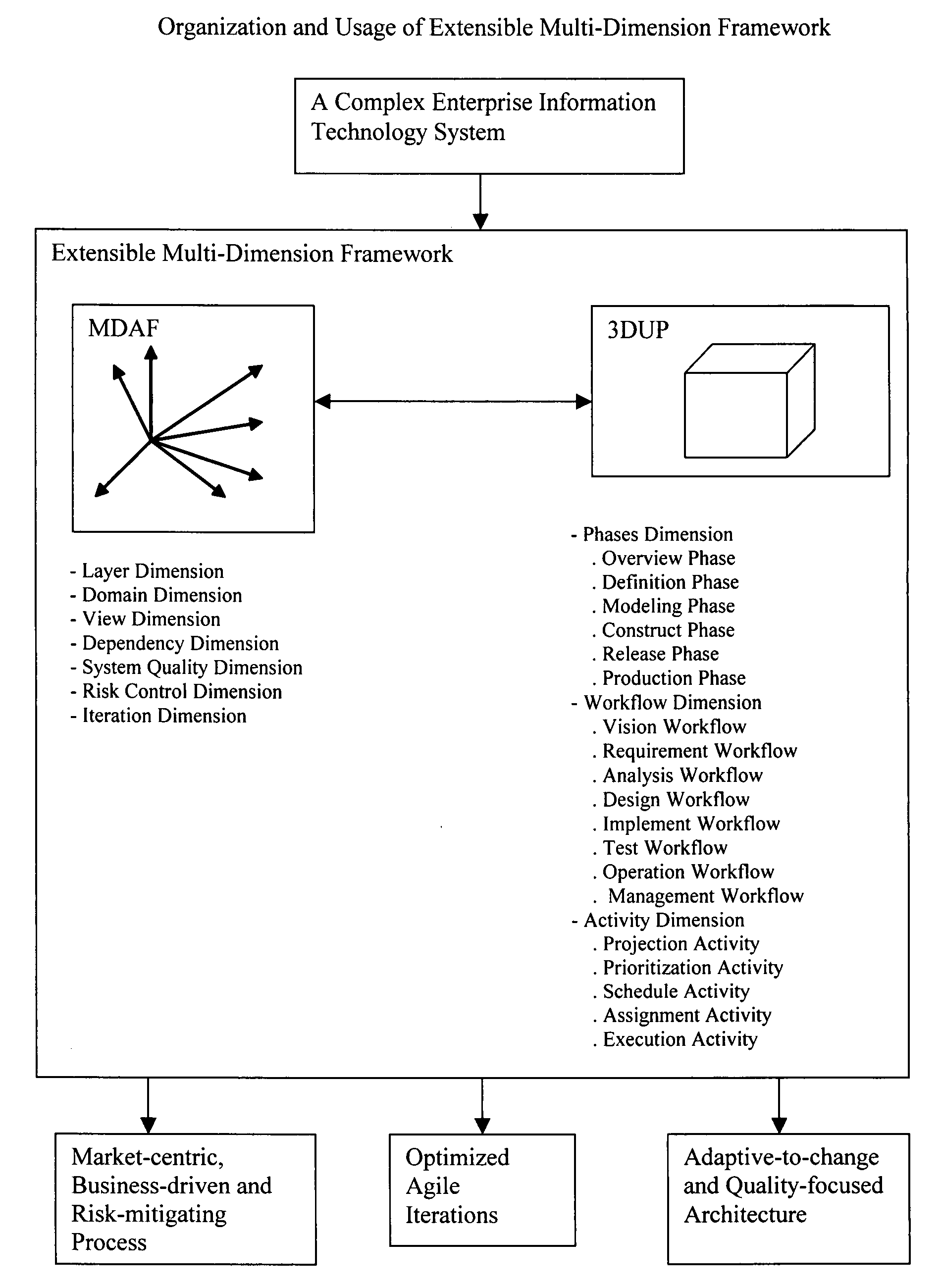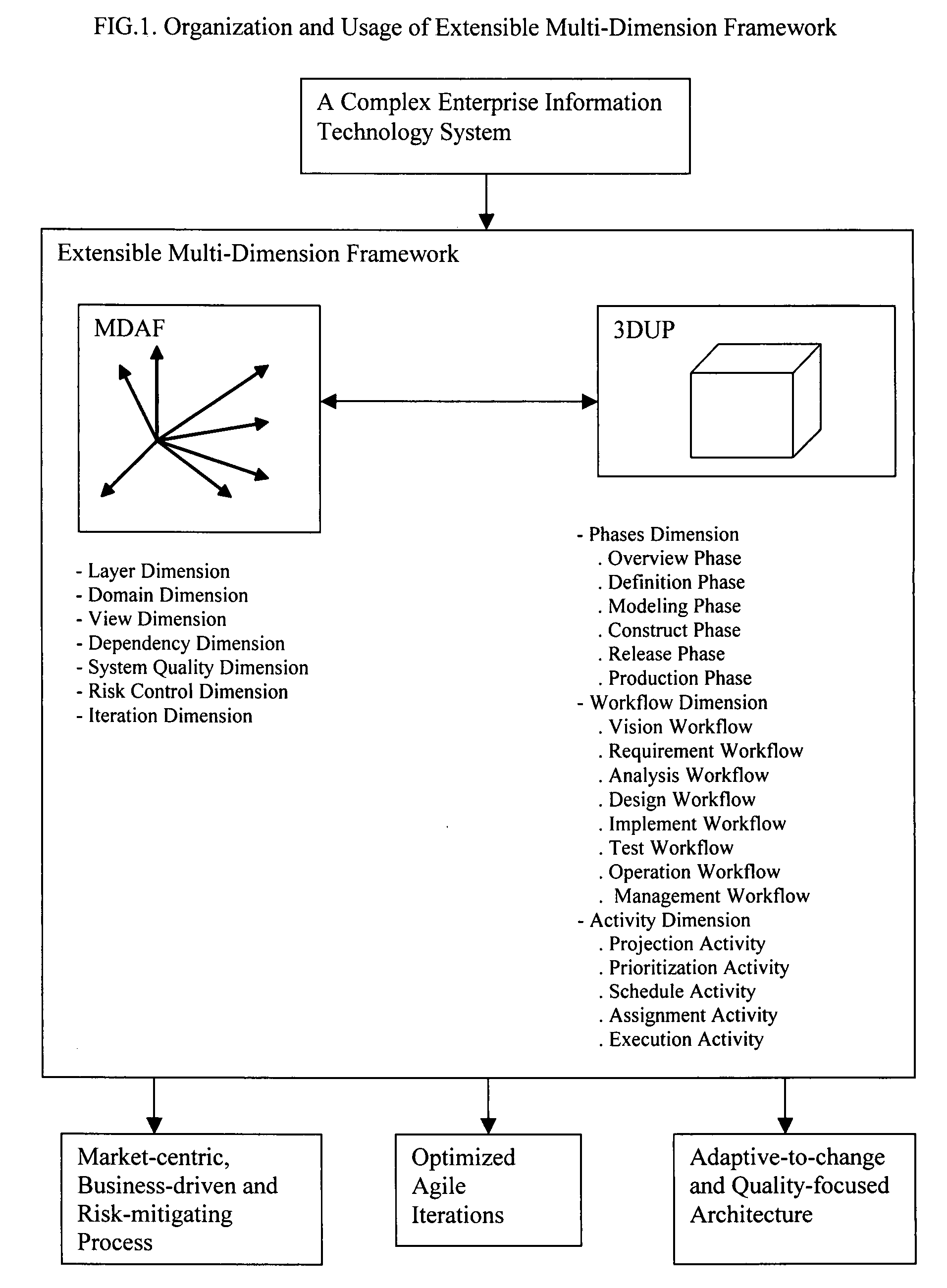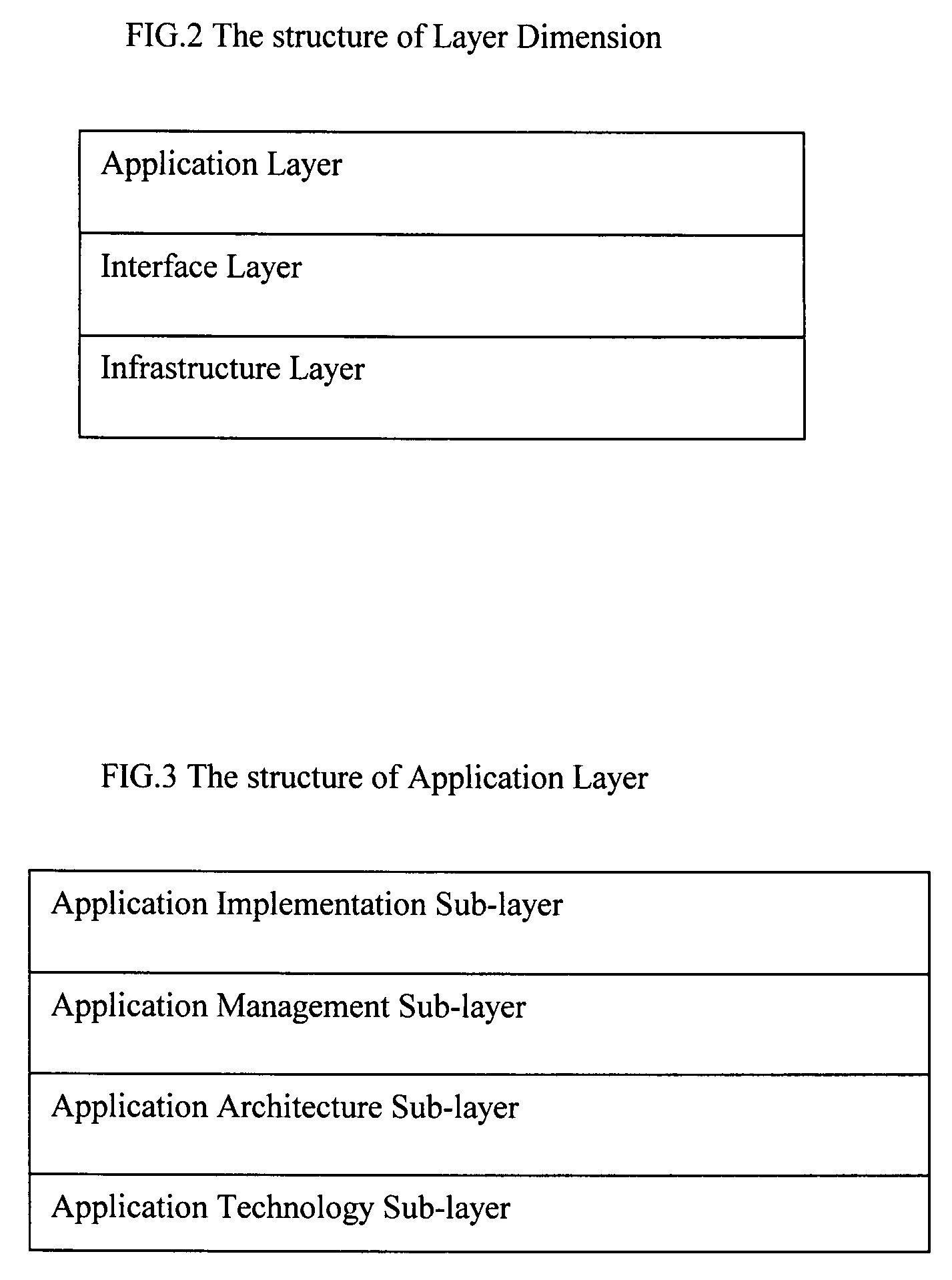Extensible multi-dimensional framework
a multi-dimensional framework and extensible technology, applied in the field of system engineering, can solve problems such as fracture of functions, technologies and system quality, and current challenges in developing such systems, and achieve the effects of increasing complexity and difficulty in creating new value-added services, and increasing complexity
- Summary
- Abstract
- Description
- Claims
- Application Information
AI Technical Summary
Benefits of technology
Problems solved by technology
Method used
Image
Examples
Embodiment Construction
[0066]The extensible multi-dimensional framework (EMDF) is a system engineering framework to design, develop and manage current and new generation enterprise information technology systems that support dynamic, real-time, automated and integrated business environments. As shown in FIG. 1, EMDF consists of a multi-dimensional architecture framework (MDAF) and a three-dimensional unified process (3DUP). The MDAF defines the comprehensive concepts for modeling a complex enterprise information technology system. The 3DUP is an iterative system development process used to manage the development lifecycle of an enterprise information technology system.
[0067]An enterprise information technology system includes hardware components and software components. It can be used to support a specific business or all businesses of an organization. EMDF handles the enterprise information technology system as one entity. It organizes the activities of business modeling, analysis, design, implementation...
PUM
 Login to View More
Login to View More Abstract
Description
Claims
Application Information
 Login to View More
Login to View More - R&D
- Intellectual Property
- Life Sciences
- Materials
- Tech Scout
- Unparalleled Data Quality
- Higher Quality Content
- 60% Fewer Hallucinations
Browse by: Latest US Patents, China's latest patents, Technical Efficacy Thesaurus, Application Domain, Technology Topic, Popular Technical Reports.
© 2025 PatSnap. All rights reserved.Legal|Privacy policy|Modern Slavery Act Transparency Statement|Sitemap|About US| Contact US: help@patsnap.com



